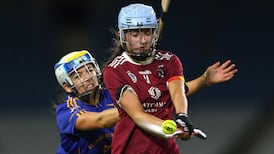The conclusion of the second year of the Super 8s has created a lot more tumult than the inaugural year and the Central Council review process will be interesting given the uproar surrounding the final weekend.
Some of the responses have been a bit intemperate. The flaws in the format were detectable from the moment it was floated: cultural suspicion of round-robins and the levels of competitiveness at a time when the old knock-out quarter-finals had been becoming more and more lop-sided.
The reservations have proved to have substance but do they fatally undermine the experiment to the point of aborting it?
Despite the association’s well-attested tendency to cut and run when new ideas encounter criticism or difficulties – look no farther back than the proposed trial to restrict the hand pass – it would surely be better to allow the experiment its third year, as originally envisaged.
Bear in mind that there were few enough complaints when the decision was taken to tweak this year's structure to allow provincial champions their first match at home, rather than in Croke Park against one of the other provincial champions, thus removing what had been an intended break on 'dead rubber' fixtures.
Sunday’s match in Omagh ended up drawing just 900 fewer than attended last year’s meeting, which was full-on and left the losers needing to win on the last day but the chill effect of the dead rubber could be less ambiguously seen in Páirc Uí Rinn on the same afternoon.
Cork football has had a great summer, which isn't over yet with the minors still in contention. Just 24 hours previously the county had won a thrilling match in the All-Ireland under-20 final. The seniors prospects of advancing were gone but it was their home quarter-final and yet despite all the good vibes, just 2,356 turned up.
GAA supporters have a fairly low boredom threshold if things aren't going well and that won't change in the years ahead.
Lack of competitiveness has undoubtedly been an issue. There is an appreciable gap between the top and bottom teams in the Super 8s but the format's defenders could say that two of the ultimately unsuccessful counties, who returned to the quarter-finals this year, Donegal and Roscommon both improved their points total this time around and won provincial titles.
Other reasons in favour of the format are the success of matches in provincial venues together with the anticipated tweak that will put Dublin on the road for next year's Croke Park round as well as the rise in spectator numbers, albeit modest.
Next weekend will be of interest to those conducting the review, as the attendance at last year’s football semi-finals was 30 per cent down on 2017 even when the Mayo-Kerry replay is stripped out. There was speculation that this could be related to the quarter-final format and the amount of travel supporters were having to undertake, as well as the declining interest caused by Dublin’s dominance.
By the sound of things this time it was probably easier to get onto the last helicopter out of Saigon than to pick up tickets for Saturday. The difference is simply the box-office appeal of the semi-finalists and lends weight to the GAA’s perennial contention that attendances are literally the luck of the draw.
Big crowds next weekend won’t of course prove that everything’s working any more than poor attendances 12 months ago proved the opposite.
All of these mitigations are realistically, unlikely to change the views of those who want to terminate the trial after this year but the more vital question is, ‘what is the alternative and what are its chances of improving things?’
The obvious default is simply to revert to knock-out quarter-finals, as in operation between 2001 and ’17. The problem with that is much the same as with the Super 8s – declining levels of competitiveness in recent years.
The first years of the All-Ireland qualifiers were blessed with some excellent contests.
Between 2001 and ’07 there were for instance seven replays in the quarter-finals and the average winning margin was just 0-4. From then up until the format change in 2017, there was just one further replay (as well as one quarter-final that went to extra-time, as was the rule that year, 2011).
Average winning margins almost doubled and the two least competitive years with winning margins averaging nearly 0-12, occurred in the last three championships, 2015 and ’17, before the change.
It can be argued that if you’re going to get done over, best that it be quick and not prolonged over four weeks but there is evidence that the home fixture in the Super 8s makes a difference to counties.
Laois dual player Cahir Healy gave an interesting interview to Michael Verney in June's Irish Independent. Most relevantly, he suggested that county teams should revert to being essentially, representative selections of players, who would primarily be attached to clubs but released for a week before inter-county championship fixtures – like international rugby or soccer players.
Might there even be an argument to revert to pure knock-out and radically reduce the inter-county footprint in a GAA year?
Taken at random from 25 years ago, the 1994 championship provides two significant deviations from the modern equivalent. It ran for longer with less activity and so had a far more relaxed match frequency: 34 fixtures in 126 days, an average of a match every 3.7 days.
This year assuming three matches left, the span is 119 day and 70 fixtures, an average of 1.7, which is twice as intense.
Secondly, a rough competitiveness index shows that in 1994, there were just six double-digit defeats all summer; so far this championship we’ve had 21.
If the GAA wants a condensed season to facilitate clubs and also more room for county players to recover in a furious schedule, there will simply have to be fewer matches.
First, decide what you want.
smoran@irishtimes.com












